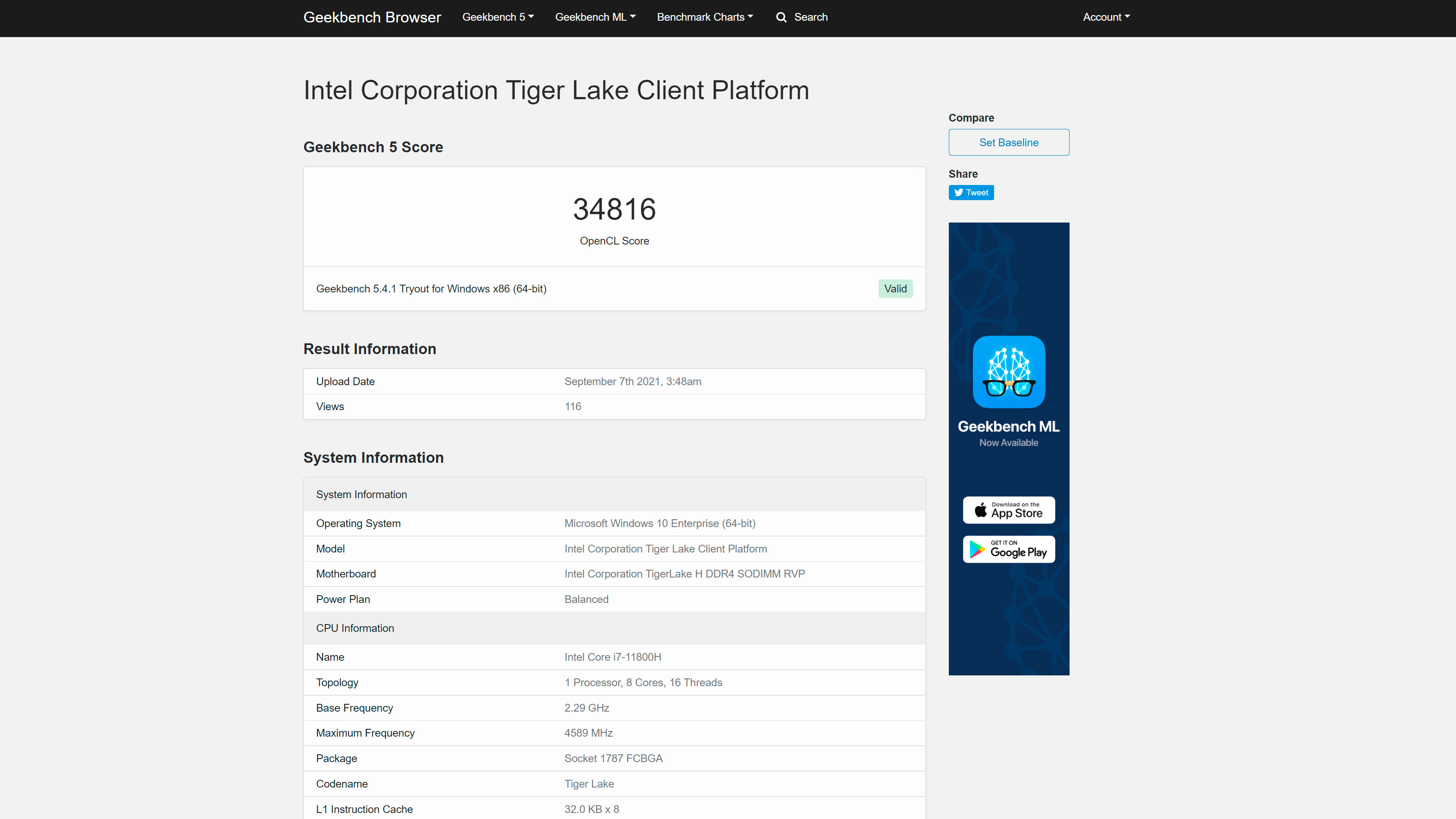Early Intel Arc Alchemist 512 EU Mobile GPU Falls to GTX 1650 Max-Q in Geekbench 5
Intel's Arc Alchemist graphics cards aren't set to officially compete with the best graphics cards until early 2022. Nonetheless, an unknown mobile Alchemist SKU (via Tum_Apisak) has recently entered the Geekbench 5 database.
Formerly known as the DG2, Alchemist is based on Intel's Xe-HPG microarchitecture. Now that Intel has resorted to using external foundries for some of its processor and graphics card products, TSMC will reportedly produce Alchemist for the chipmaker on the 6nm FinFET (N6) manufacturing process. Hence, Intel doesn't have to compete with AMD for 7nm wafer capacity. Alchemist will arrive with support for the latest technologies, including hardware-based ray tracing, AI supersampling and DirectX 12 Ultimate.
The Alchemist graphics card that showed up in Geekbench 5's database reportedly features 512 execution units (EUs), with a maximum frequency of 1.8 GHz. It's likely an early engineering sample, so the final clock speeds may be higher. Intel paired the graphics card alongside the Core i7-11800H on a Tiger Lake platform, suggesting that the next wave of Tiger Lake-based laptops will likely feature Alchemist graphics cards.
The mobile Alchemist graphics card concluded the Geekbench 5 benchmark with an OpenCL score of 34,816 points. For comparison, the Alchemist SKU (back when it was DG2) with 256 EUs at 1.4 GHz scored 18,482 points in the same benchmark. Therefore, the 512 EU model offers up to 88% higher OpenCL performance. It's important to note the processor disparity, though. The 512 EU unit was paired with a Tiger Lake processor, while the 256 EU model had an Alder Lake chip.
The performance of the 512 EU model is along the lines of AMD's Radeon Pro 5500M (35,005). Intel's graphics card is still slower than the GeForce GTX 1650 Max-Q (36,045), though. Do bear in mind that the Alchemist is likely early silicon with preliminary drivers, and Geekbench 5 isn't the best judge of graphics card performance.
It's very likely that we'll learn more about Alchemist at CES 2022, and perhaps Intel will provide a more definitive launch date. The graphics card shortage is expected to continue through most of 2022 ath this point. So as long as Intel puts out a competitive product, its Alchemist silicon should do well in these times when the fastest or cheapest graphics card isn't the winner, but the one that's more widely available.
Get Tom's Hardware's best news and in-depth reviews, straight to your inbox.

Zhiye Liu is a news editor, memory reviewer, and SSD tester at Tom’s Hardware. Although he loves everything that’s hardware, he has a soft spot for CPUs, GPUs, and RAM.
-
-Fran- I'll give Intel the benefit of the doubt here and assume it's a driver optimization issue. It will be interesting to see how GPU utilization looks like when performing the different set of tests/benchmarks for it when it launches in order to also have a look at the driver stack itself.Reply
That being said, and from what it is being reported and leaked around, seems like Intel is trying to commit to gaming first and everything to just "work" on release, which is not necessarily bad. Or so it is my impression.
Regards. -
InvalidError It would be extremely disappointing if the best DG2 Xe has to offer isn't even on par with the RTX3060.Reply
